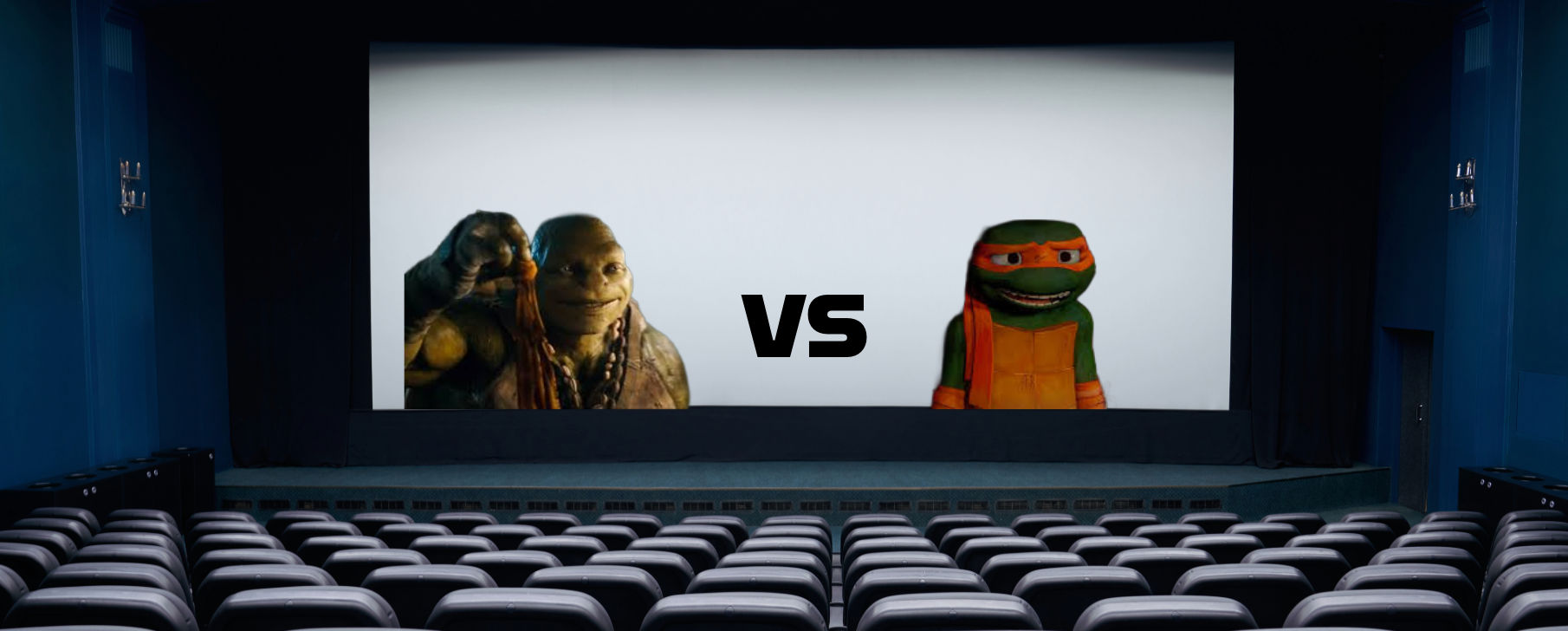By Philip Berkwit
In July of 2025, a new film was released in the “Superman” and DC Universe (DCU) film franchise. This film was bright and colorful, with a message about kindness and sticking to ones beliefs even when they are unpopular. This is a huge contrast from the 2013 Superman film, “Man of Steel,” which instead chose to explore the loneliness, confusion and destruction that a creature like Superman would exhibit. “Man of Steel” was a dark and gritty film where the leading character showcased a brooding and stoic character. Within ten years, Hollywood’s formula has changed drastically. In the 2000’s and early 2010’s, blockbusters were largely known for being dark, apocalyptic and having themes related to distrust in institutions. This period brought forth films and shows like, “The Dark Knight,” “28 Days Later,” and “The Walking Dead.” The 2000’s were not the first time that Hollywood has had a drastic change in tone. The 1930’s, films about escapism along with poverty became huge because of the Great Depressions effect on society. Films like “Gone with the Wind” and “The Wizard of Oz” catered to society’s desire to escape from the realities of the depression. On the other hand, films like “The Grapes of Wrath,” “Gold Diggers of 1933,” and “Mr. Smith Goes to Washington” explored the truths and issues of poverty and government in the modern day.
Movies were not the only source of media that had a culture shock due to the Great Depression. The desire for escapism brought forth the vast popularity of superhero comic books, with Superman being one of the first and most popular superheroes. Superman initially represented a romanticized version of America. He wore a symbol of hope and stood for truth, justice and the American way. Over time artists in some ways or another have tried to change the character depending on the culture. During the last decade, many artists have tried to showcase evil versions of Superman. At this same time, secularism and Nihilism had been on the rise, and patriotism had been decreasing due to a multitude of reasons including fear over climate issues, economic issues, mental health and global conflicts and issues. Because of this, many studios tried to adapt their art to the modern era. For example, Homelander from the Amazon Prime show, “The Boys.” Was an obvious twist on the Superman character. Homelander wears an American flag as a cape and is seen as a hero. However, secretly he is a psychotic murderer who does not care about human life.
Dark and twisted versions of iconic characters and stories became one of Hollywood’s most successful and widespread strategies after the September 11 terrorist attack in 2001. This strategy was on full display after the success of the 2008 film, “The Dark Knight.” Due to it’s success, many blockbusters in the late 2000’s and early 2010’s had marketing campaigns that portrayed their films as dark and gritty, even if the films themselves were not. Warner Bros success from “The Dark Knight” also brought forth “Man of Steel” which was produced and written by Christopher Nolan and David S. Goyer; the duo behind “The Dark Knight.”
The early and mid 2010’s saw a rise of left leaning beliefs in the United States. The democratic party won elections easily with the popularity of Barack Obama. Hollywood’s landscape proceeded to become more liberal with a rising importance of showcasing diversity. Black Rock, the biggest investment company in the world, also put a focus on Environmental Social Governance (ESG) investing. During this time, the success of The Marvel Cinematic Universe (MCU) brought forth a lighter tone in films, and at the same time filmmakers put a focus on turning away from tradition and putting an emphasis on diversity and more liberal beliefs. This era brought forth films and shows like “The Woman King,” “Black Panther,” and “She-Hulk.”
However, in the modern day, audiences have started to react less positively to Hollywood constantly embracing this tone. The modern culture, specifically Generation Z has also become more religious. According to Newsweek “nearly half of young adults in England and Wales now say they believe in God or a higher power according to new figures—a striking turn that runs counter to decades of declining belief across Western societies. Data from the U.S. reveals a similar trend, with the percentage of young adults engaging with the bible and committing to Christianity on the rise too. Findings from the American Bible Society spotted the first increase in “bible use and scripture engagement” among younger adults since 2021. Generation Z men are also becoming more right-wing. According to Katie Couric Media, “In the 2024 presidential election, men aged 18 to 29 swung sharply in their political alignment. Roughly 56 percent voted for President Donald Trump, a stark reversal from 2020, when the same percentage backed Joe Biden. Not since George H.W. Bush’s election in 1988 has a majority of young male voters backed a Republican for president.”
In less than a year since Trump’s victory, Hollywood has had a noticeable change in tone. According to Yahoo Finance, “BlackRock (BLK) is scrapping Environmental Social Governance (ESG) investing and instead pivoting to focus solely on the environmental component, rebranding it as “transition investing.”
The summer of 2025 brought forth a new Superman film, that had many of the optimistic and traditionally hopeful values that the character initially had. The film also reused the 1978 John Williams Superman theme, further showcasing the films more traditional take on Superman. Disney’s, “Fantastic Four First Steps” also embraced traditional family values and a core part of the films story was Sue Storm; the only woman on the team having a baby. Fantastic Four also had a 60s retro aesthetic that was reminiscent of “The Jetsons,” displaying the men in suits and woman in blouses or dresses.
At the same time, these films also gained controversy from some sources for being too left wing. James Gunn, the director of “Superman” gained criticism for claiming that Superman was an immigrant story. “Fantastic Four” also gained criticism for portraying its iconic character Silver Surfer as a woman rather than his usual portrayal as a man. Many moviegoers also saw a fictional conflict in “Superman” as a parallel to the Gaza War.
Audiences’ assumptions and Hollywood’s own subculture has much to do with this reception. however, the current culture changes have also contributed to the film industries reputation. Hollywood is now having unpredictable returns when it comes to success. Despite the new version of “Superman” being critically praised, it has been unable to capture the financial success of its middling critically received predecessor, “Man of Steel.” The 2025 box office has had a multitude of underperformances, with nearly every sequel or reboot in the Summer of 2025 being less profitable than its predecessor. However, sequels and reboots are still profitable. The highest grossing American made film of 2025 so far is the live action remake of the 20-year-old film,” Lilo and Stitch.” These seemingly unpredictable outcomes have put the film industry in a constantly changing state.
Graphic by Philip Berkwit





